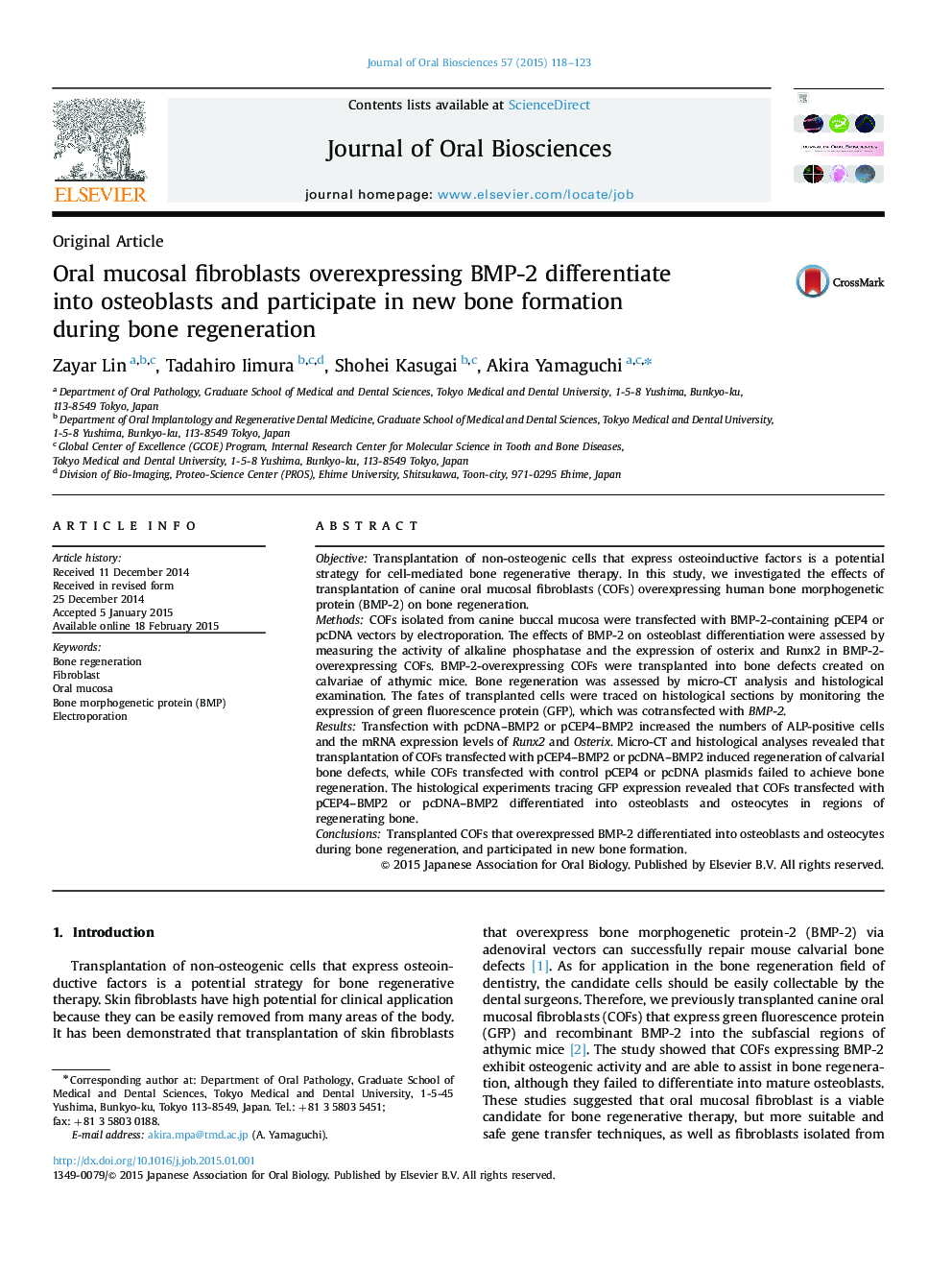| Article ID | Journal | Published Year | Pages | File Type |
|---|---|---|---|---|
| 2776805 | Journal of Oral Biosciences | 2015 | 6 Pages |
ObjectiveTransplantation of non-osteogenic cells that express osteoinductive factors is a potential strategy for cell-mediated bone regenerative therapy. In this study, we investigated the effects of transplantation of canine oral mucosal fibroblasts (COFs) overexpressing human bone morphogenetic protein (BMP-2) on bone regeneration.MethodsCOFs isolated from canine buccal mucosa were transfected with BMP-2-containing pCEP4 or pcDNA vectors by electroporation. The effects of BMP-2 on osteoblast differentiation were assessed by measuring the activity of alkaline phosphatase and the expression of osterix and Runx2 in BMP-2-overexpressing COFs. BMP-2-overexpressing COFs were transplanted into bone defects created on calvariae of athymic mice. Bone regeneration was assessed by micro-CT analysis and histological examination. The fates of transplanted cells were traced on histological sections by monitoring the expression of green fluorescence protein (GFP), which was cotransfected with BMP-2.ResultsTransfection with pcDNA–BMP2 or pCEP4–BMP2 increased the numbers of ALP-positive cells and the mRNA expression levels of Runx2 and Osterix. Micro-CT and histological analyses revealed that transplantation of COFs transfected with pCEP4–BMP2 or pcDNA–BMP2 induced regeneration of calvarial bone defects, while COFs transfected with control pCEP4 or pcDNA plasmids failed to achieve bone regeneration. The histological experiments tracing GFP expression revealed that COFs transfected with pCEP4–BMP2 or pcDNA–BMP2 differentiated into osteoblasts and osteocytes in regions of regenerating bone.ConclusionsTransplanted COFs that overexpressed BMP-2 differentiated into osteoblasts and osteocytes during bone regeneration, and participated in new bone formation.
